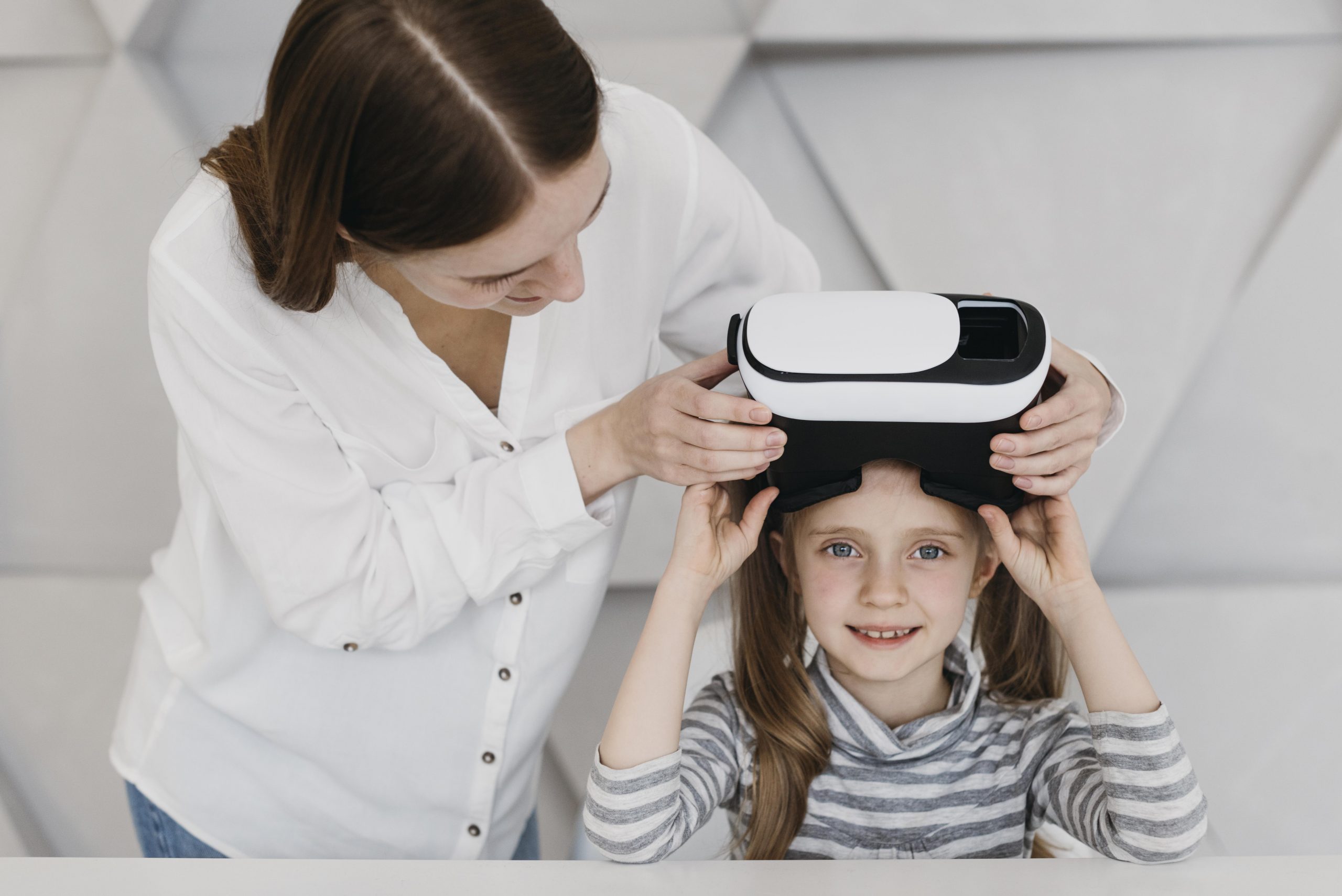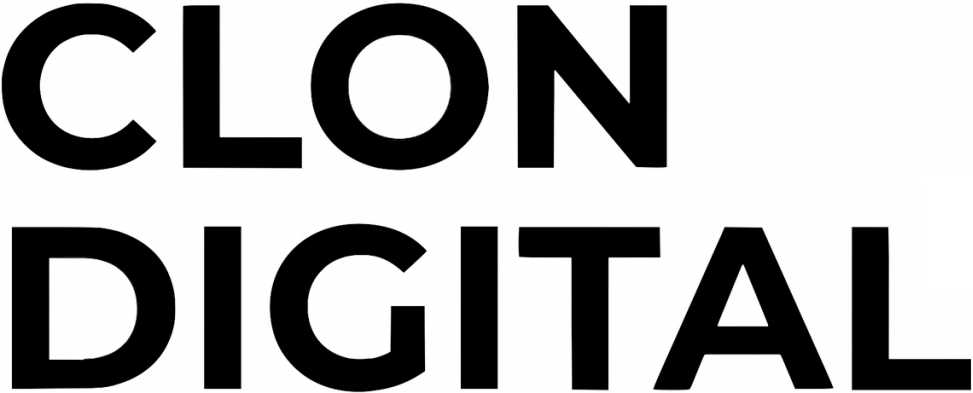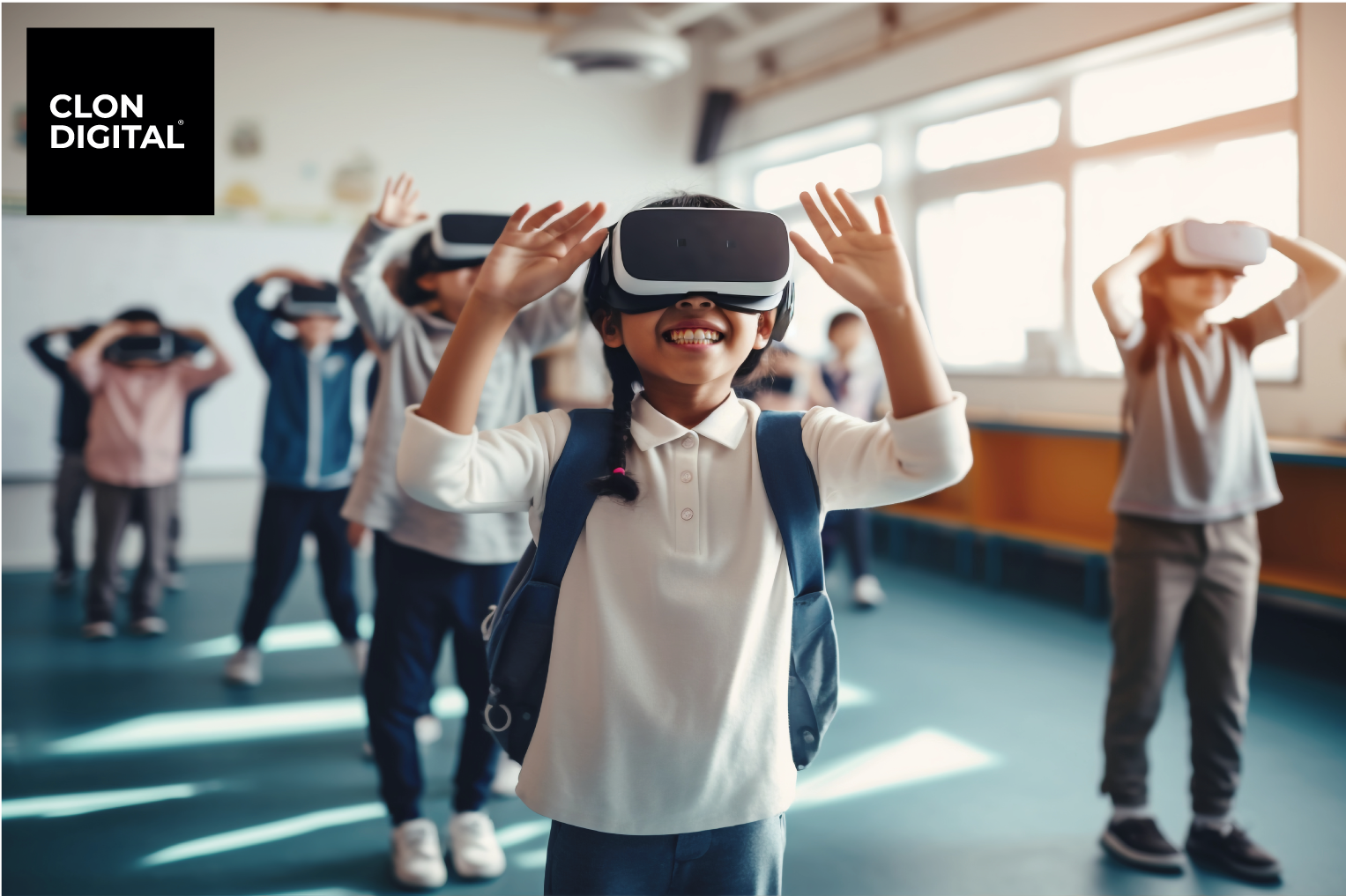Marty McFly already hinted at it in 1985 when, after testing the time machine built by his friend Doc, they traveled back to 1955. Yes, I’m talking about the science fiction movie Back to the Future. But it’s true that nowadays we can also travel through time and space. In fact, YouTuber Lucas Rizzotto was one of the first celebrities to achieve this after recording a year of his life to relive it through Virtual Reality (VR).
He created a control panel similar to the one in the American movie, through which he could choose the moment he wanted to remember. Virtual reality has other applications beyond entertainment and fun. It is also functional in many other fields, such as education. More and more educational centers are implementing this type of technology in their classrooms. This way, they facilitate the work of teachers and the learning of students.
Augmented and virtual reality are revolutionizing education by offering immersive and dynamic experiences that enhance student learning. They allow students to interact with educational content in a tangible and visually stimulating way. This improves information retention and fosters a deep understanding of concepts.
Additionally, these technologies promote collaborative learning by allowing students to work together in shared virtual environments. This fosters communication skills and teamwork. Furthermore, teachers can tailor educational content to the individual needs of each student, providing personalized learning experiences and increasing student motivation.
Augmented and virtual reality are revolutionizing education. Thanks to these technologies, students can visit some of the world’s best museums, like the Louvre or the Prado. They can also discover the magic of Roman ruins or Greek temples. They can simulate a battlefield, such as that of the Spanish Civil War or World War II. All this without leaving their desks, which significantly reduces costs.

Augmented and Virtual Reality in All Areas of Knowledge
But it’s not just history that benefits; other areas of knowledge such as mathematics, physics, and chemistry also do. Thanks to Virtual Reality (VR) and Augmented Reality (AR), students can visualize the exact point of coordinates on a map or the transformation process of a molecule to obtain hydrogen.
Moreover, simulations are very useful as children and young people can learn to solve conflicts, problems, or accidents that happen in real life. There are situations everyone should control, as the probability of them happening to us or someone in our environment is high. Thus, teachers could realistically teach how to put out a kitchen fire or save a person’s life through cardiopulmonary resuscitation.
The goal is not for technology to replace real-life actions but to help break spatial and temporal barriers. This more visual and interactive type of knowledge enhances children’s creativity, forming clearer images in their minds.
Furthermore, it promotes educational gamification, as teachers manage to make students learn and have fun simultaneously. Virtual reality also adapts to students with special needs. It is about adaptive learning, where teachers can understand each student’s needs and difficulties.
Howard Gardner’s Theory of Multiple Intelligences explains the different skills and competencies in which a student can excel. Linguistic, kinesthetic, naturalist, interpersonal, logical-mathematical, intrapersonal, musical, and visual-spatial are the eight intelligences by which a student can stand out. This type of technology combines many of them, making it easier for children to learn.
Studies Demonstrating the Effectiveness of Three-Dimensional Technology in Education
Of course, there is scientific evidence supporting the benefits of augmented and virtual reality in education. According to a study published by Chandrasekera Tilanka from the University of Oklahoma and Yoon So-Yeon from Cornell University, AR provides students with interaction with a three-dimensional visual environment very similar to the real world, allowing them to experience the sensation of being present in the environment and the possibility of interacting with it.
A study published in the journal Computers & Education found that students who used VR to learn about science showed a significant increase in their understanding of concepts compared to those who used traditional teaching methods. Another study, published in Frontiers in Psychology, demonstrated that AR could improve information retention and concept comprehension by providing a more immersive and stimulating learning experience.
Moreover, different types of experiments have shown that virtual and augmented reality can increase student motivation by making learning more interactive and exciting. For example, Professor Jeremy Bailenson from Stanford University transferred his face-to-face classes to virtual classes. On the other hand, students from the Physiotherapy degree at the University of Cádiz studied lung auscultation using AR.
These are just a few examples of the growing amount of scientific evidence supporting the benefits of AR and VR in education. These studies suggest that these technologies can significantly improve the learning process for students.
Augmented and virtual reality are revolutionizing education. If you have any questions about the use of augmented and virtual reality in education, don’t hesitate to contact us!

